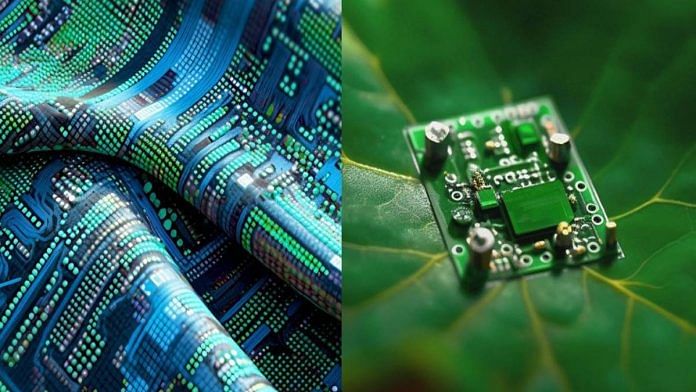New Delhi: Flexible batteries, sustainable aviation fuel, wearable sensors for plants, and generative artificial intelligence have been rated among the top 10 emerging technologies for 2023 by a World Economic Forum (WEF) report.
The ‘Top 10 Emerging Technologies Report 2023’ was produced in collaboration with Frontiers Media, a publisher of research journals. The report lists breakthrough technologies with the greatest potential to make a positive impact on the world in the next three to five years.
The technologies have been chosen by a group of experts who reviewed 95 nominations against several criteria like novelty, applicability, depth (being developed by more than one firm) and power (to alter established ways and industries).
Jeremy Jurgens, WEF managing director and head of the Centre for the Fourth Industrial Revolution, said in a statement: “New technologies have the power to disrupt industries, grow economies, improve lives and safeguard the planet — if designed, scaled and deployed responsibly.”
“We hope that this year’s report serves as a powerful tool for business leaders and policymakers to unlock the transformative potential of emerging technologies and shape their inclusive adoption,” Jurgens added.
The Centre for the Fourth Industrial Revolution is a global platform established by the WEF that focusses on inclusive technology governance and responsible digital transformation.
Also Read: ‘1st for India’ — device made from pig gall bladder heals skin wounds like burns with few scars
New tech
According to the report, flexible batteries are expected to hit a market value of $240 million by 2027. This new generation of battery technlogy has applications across medical wearables, biomedical sensors, flexible displays and smart watches, the report says.
“Standard rigid batteries may soon be a thing of the past as thin, flexible batteries, made of lightweight materials that can be twisted, bent and stretched, reach the market,” the report says.
The list also included sustainable aviation fuel produced from biological (e.g. biomass) and non-biological (e.g. carbon dioxide) sources, which could help decarbonise the aviation industry in the short to medium term, with no sign of long-haul electric flights. The aviation industry contributes 2 to 3 per cent of annual global carbon dioxide emissions, adds the report.
Designer phages are also on the list. Phages are viruses that selectively infect specific types of bacteria.
“Equipped with increasingly sophisticated genetic engineering tools, scientists can now reprogramme phages to infect the bacteria of their choosing, allowing them to target one type of bacteria in a complex community of co-existing types of bacteria such as in plant, animal and human microbiomes,” says the report.
The report said designer phages could eventually be used to treat microbiome-associated diseases in humans and animals, and treat some plant diseases and eliminate dangerous bacteria in food supply chains.
With technological advancement, large-scale farms that traditionally relied on manual soil testing and visual observations are now being monitored by satellites and sensor-equipped drones, says the report.
Now, there is a new generation of plant sensors — small, non-invasive devices — that can be “worn” by individual plants for continuous monitoring of temperature, humidity, moisture and nutrient levels.
Assuming they can overcome scaling costs, these sensors could improve plant health and increase yields, the report says.
The report also lists spatial omics. This technology allows scientists to “see” biological processes at the molecular level inside cells by combining advanced imaging techniques with the specificity of DNA sequencing. It could help researchers develop new treatments for complex diseases, the report says.
The list also includes flexible neural electronics — brain-machine interfaces that allow direct communication between the brain and external computers.
“They have potentially life-changing applications in medicine and neuroscience such as the treatment of epilepsy, depression or paralysis,” the report says.
Other technologies which made it to the list include metaverse for mental health, sustainable computing, AI-facilitated healthcare, and generative artificial intelligence.
(Edited by Anumeha Saxena)
Also Read: From disease surveillance to aiding diagnoses — how AI tools are revolutionising Indian healthcare



